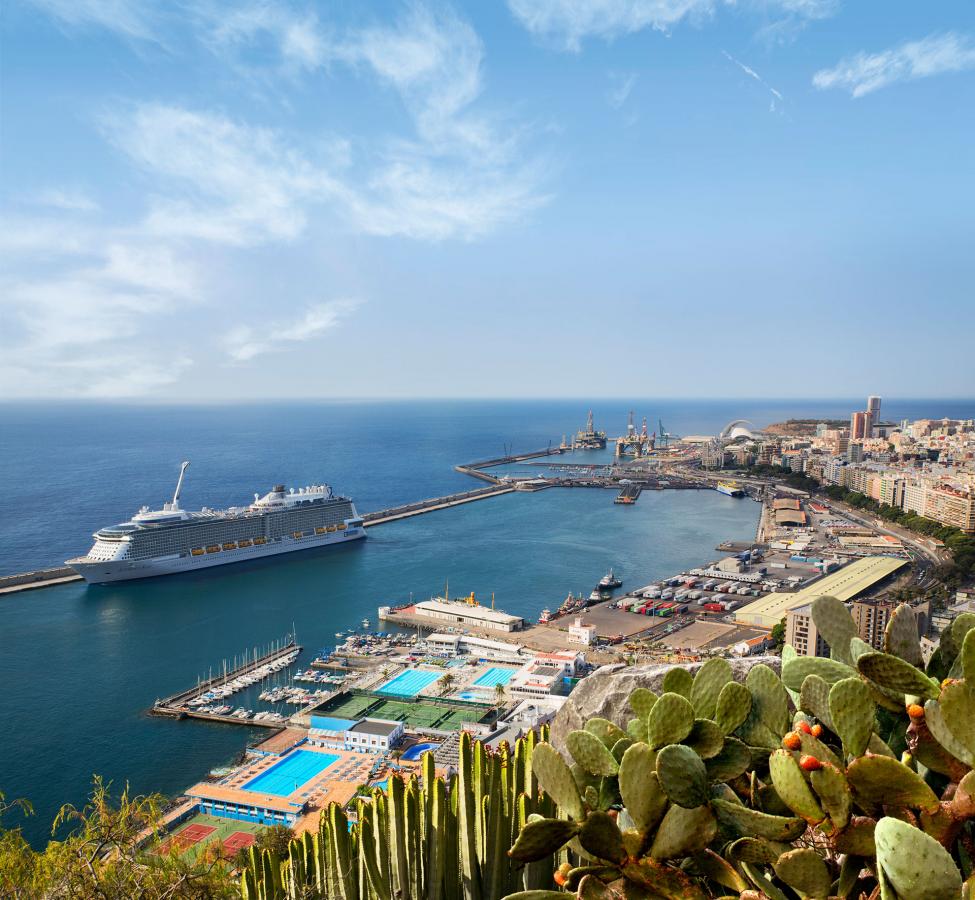The Port of Santa Cruz de Tenerife is a key hub for the cruise sector in Spain. Here are some interesting things to know about the port.









The Port of Santa Cruz de Tenerife is a vibrant hub which employs 31,233 people and generates income of 1481 million euros. It is a point of reference for the world cruise sector. According to the Spanish Ministry of Development, in 2018 the Port of Santa Cruz de Tenerife received one million cruise passengers. This figure makes the Port of Santa Cruz de Tenerife the second most frequented cruise port in the Canary Islands (after the Port of Las Palmas, which registers around 1.3 million visitors each year) and the fourth most important cruise port in Spain (Barcelona heads the list of Spanish cruise ports).
Today the Port of Santa Cruz de Tenerife is the most important port in Tenerife (followed by Los Cristianos), but historically other ports have been more significant. In the past there was more commercial activity around the ports of Garachico and La Orotava than at Santa Cruz.



The rise of Santa Cruz as a port has been aided by two things. Firstly, natural disasters have hampered the emergence of competitors ports. In 1706 the port of Garachico was destroyed after a volcanic eruption. Secondly, the Port of Santa Cruz de Tenerife has developed a commercial network with a system of internal communications which has bolstered the development of business activities around the port.
The Port of Santa Cruz de Tenerife extends over ten kilometres from the Dársena de Pesca (Fishing Dock) to the Muelle de Honduras (Dock of Honduras). The port enjoys great facilities. Indeed, it has the most modern cruise terminal in Macaronesia (a region formed by the archipelagos of the Azores, the Canary Islands, Cape Verde, Madeira, and the Islas Salvajes). The terminal, which opened in 2016, has a state of the art construction and has the capacity to receive ecological cruise ships which are powered by liquid natural gas, the cleanest fossil fuel in the world. By being able to fill up ships with liquefied gas at the Muelle Chicharrero (Chicharrero Pier), the Port of Santa Cruz de Tenerife shows its commitment to the environment and to the reduction of CO2 and greenhouse gas emissions
The port of Santa Cruz has a privileged position in the world’s shipping routes. Currently, it is connected to more than 270 ports in Europe, Africa, and America. These connections involve not just cruise ships but also container ships carrying important goods for the Tenerife economy.
Some of the largest ocean liners in the world have docked in the port of Santa Cruz, for example the Queen Mary 2 – which has a capacity for 2620 passengers and 1250 crew members – and the Queen Elizabeth 2 – which has a crew of over 1000 and almost 1800 passengers.
The Port of Santa Cruz and the Port of Shenzhen, located in the Chinese province of Canton, are twinned thanks to a collaboration agreement signed at the World Port Strategy Forum held in Tenerife in June 2013. This agreement commits both ports to share experience and knowledge in fields such as environmental protection, port security, planning, and professional development. The agreement also underlines the two ports commitment to an enhanced commercial relationship which should be achieved through the maintenance of regular contact.





